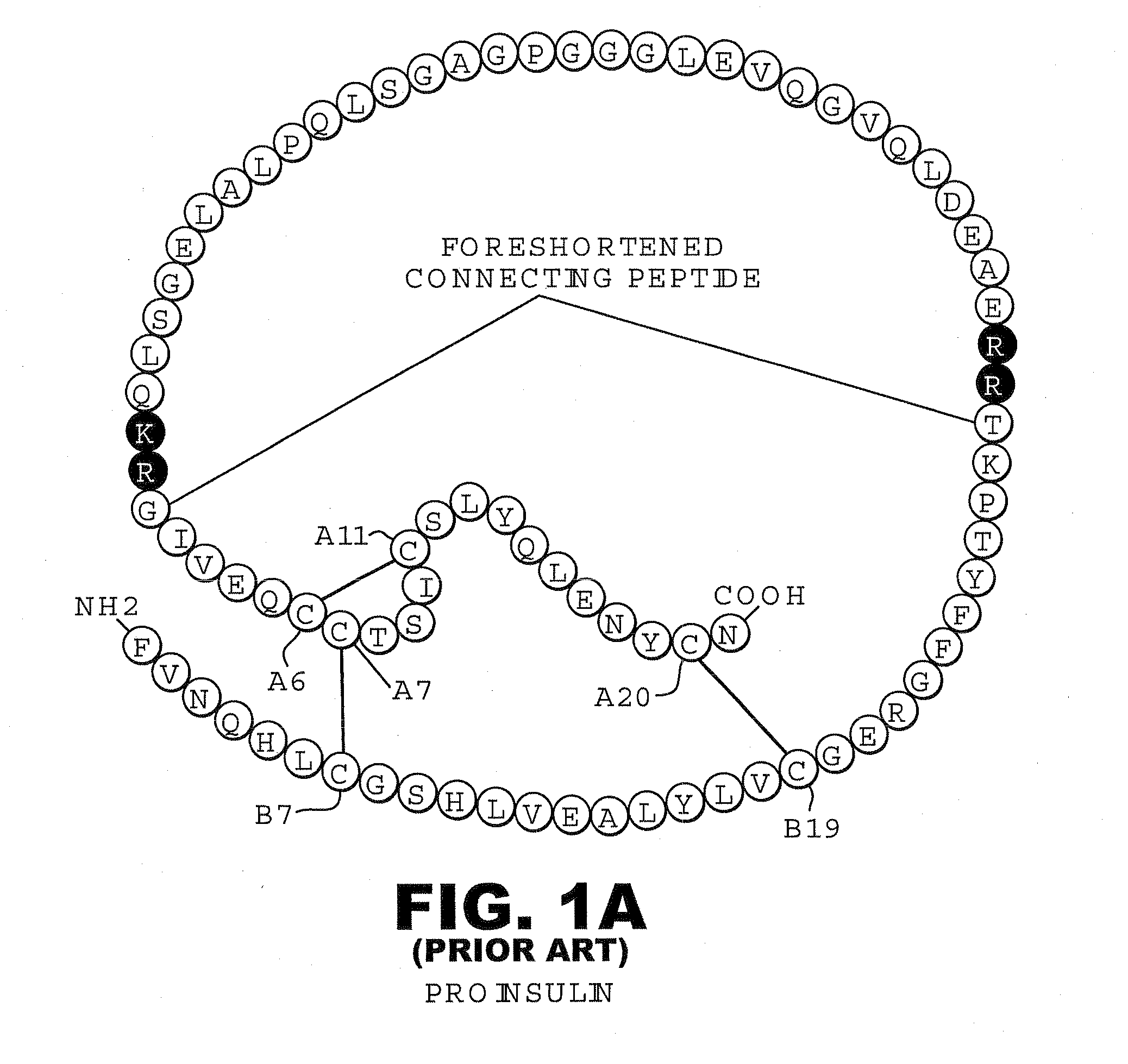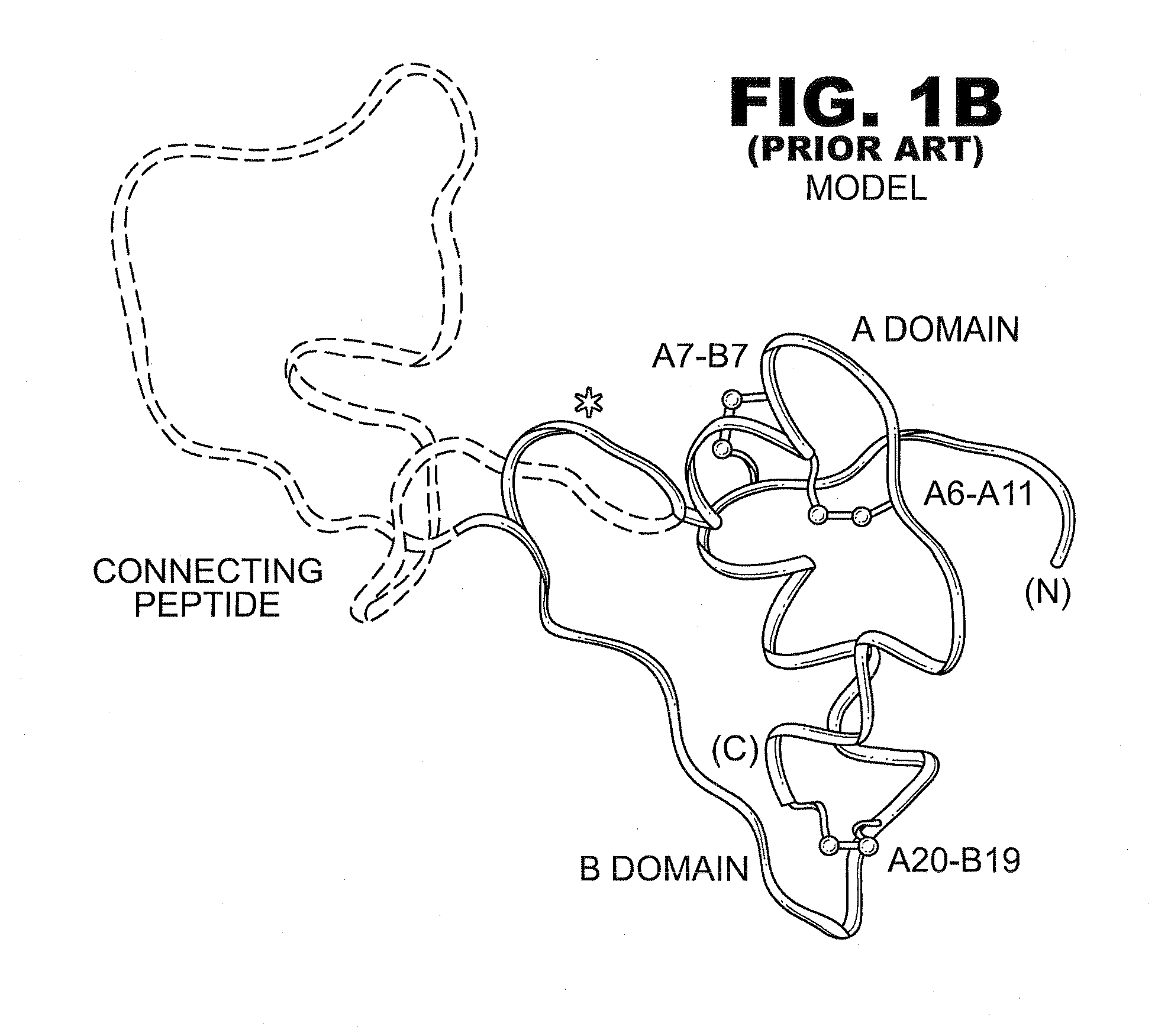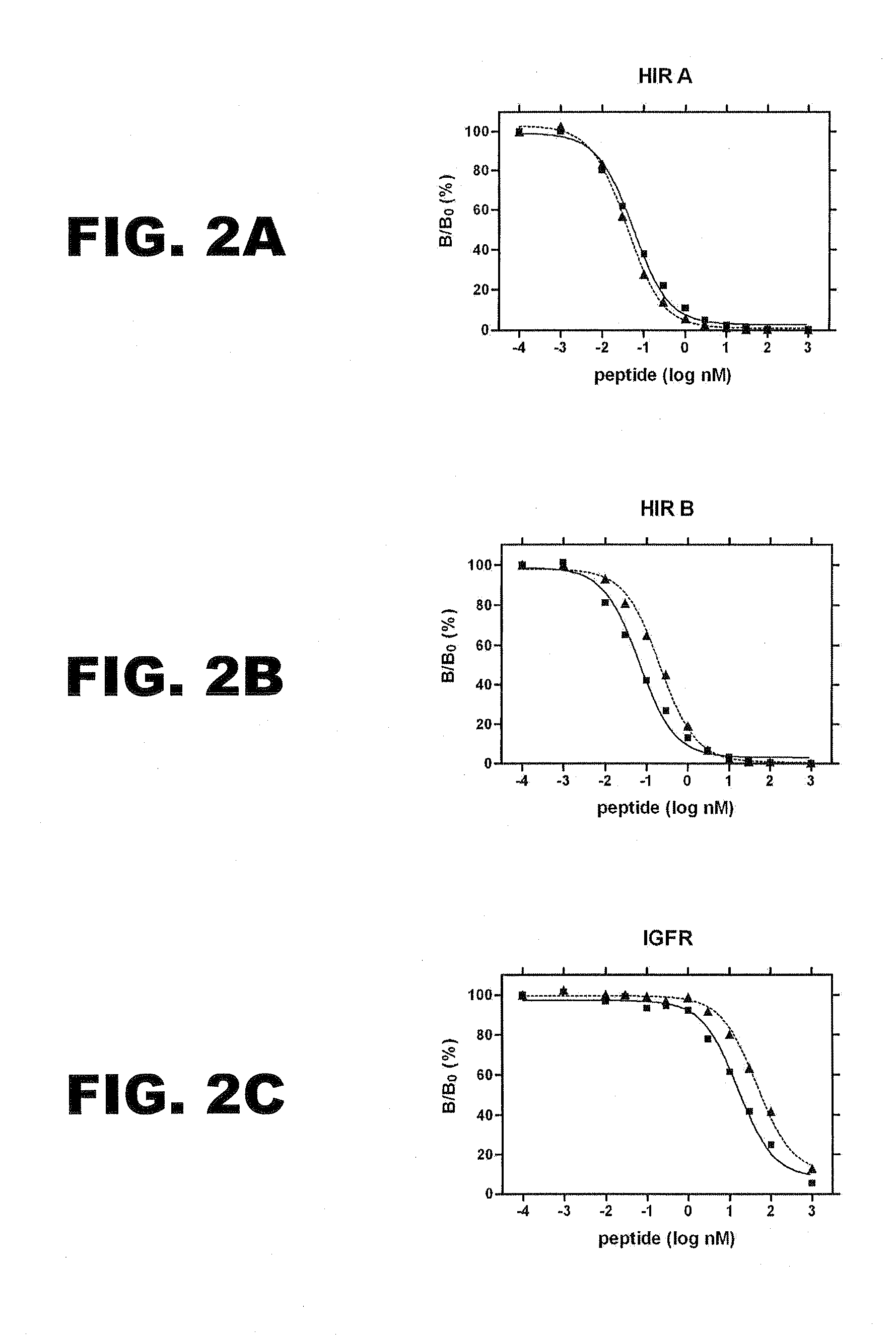Isoform-specific insulin analogues
an insulin analogue and isoform technology, applied in the field of isoform-specific insulin analogues, can solve the problems of poor physical stability, increased fibrillation, and increased risk of fibrillation of amino-acid substitutions in insulin molecule substitutions, and achieve the effect of enhancing the stability of the insulin hexamer
- Summary
- Abstract
- Description
- Claims
- Application Information
AI Technical Summary
Benefits of technology
Problems solved by technology
Method used
Image
Examples
Embodiment Construction
[0038]The present invention is directed toward recombinant single-chain insulin analogues that provide isoform-specific binding of the analogue to the A-isoform of the insulin receptor (IR-A) with binding to the B-isoform (IR-B) reduced by at least sixfold. To that end, the present invention provides insulin analogues that contain a variant insulin A-chain polypeptide and a variant insulin B-chain polypeptide connected by a truncated linker polypeptide. In one example, the linker polypeptide may be less than 15 amino acids long. In other examples, the linker polypeptide may be 4, 5, 6, 7, 8, 9, 10, 11, 12, or 13 amino acids long.
[0039]The single-chain insulin analogue of the present invention may also contain other modifications. As used in this specification and the claims, various substitution analogues of insulin may be noted by the convention that indicates the amino acid being substituted, followed by the position of the amino acid, optionally in superscript. The position of th...
PUM
| Property | Measurement | Unit |
|---|---|---|
| pH | aaaaa | aaaaa |
| binding affinity | aaaaa | aaaaa |
| affinity | aaaaa | aaaaa |
Abstract
Description
Claims
Application Information
 Login to View More
Login to View More - R&D
- Intellectual Property
- Life Sciences
- Materials
- Tech Scout
- Unparalleled Data Quality
- Higher Quality Content
- 60% Fewer Hallucinations
Browse by: Latest US Patents, China's latest patents, Technical Efficacy Thesaurus, Application Domain, Technology Topic, Popular Technical Reports.
© 2025 PatSnap. All rights reserved.Legal|Privacy policy|Modern Slavery Act Transparency Statement|Sitemap|About US| Contact US: help@patsnap.com



